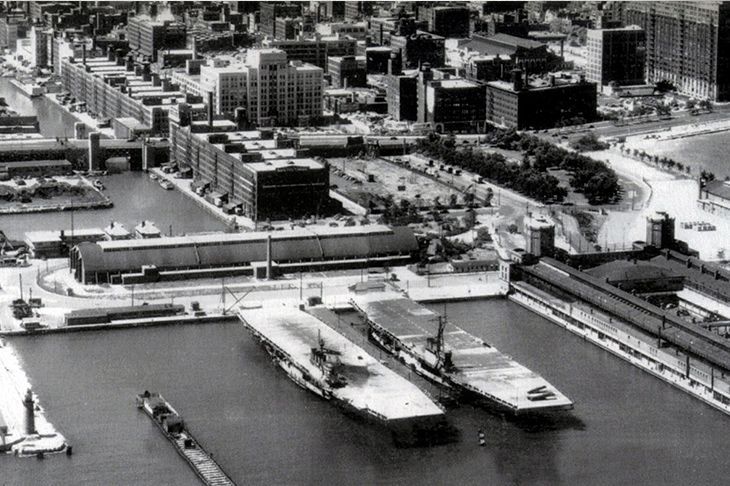Navy Pier’s historical role in WWII
As WWI ended and WWII began, the Pier once again offered its services to a nation in need, providing remarkable training opportunities for new troops.
Although the Pier saw some decline during the Great Depression, it continued to host events and exhibitions, providing a happy diversion during difficult times. But when WWII struck and the U.S. joined the war, Navy Pier was once again called upon for a national cause.
The Navy re-converted the Pier back into a massive training facility, utilizing Lake Michigan as a secluded and protected environment for new recruits at the suggestion of Commander Richard F. Whitehead. The Naval Air Technical Training Center (NATTC) included a wide range of training capabilities, from radio to engine maintenance to airframe repair to weapons maintenance to a school for cooks. These schools trained over 60,000 Navy, Marine, and Allied technicians who supported aircraft carrier operations at sea. It also featured a movie theater and a large recreational space to ensure the troops were in prime physical condition.

USS Wolverine and USS Sable docked at Navy Pier in 1945.
The Navy also purchased two cruise ships and refit them into aircraft carriers, naming them USS Wolverine and USS Sable. Together, the ships would help to qualify 18,000 pilots for carrier take offs and landings, including the future president of the United States, George H. W. Bush and legendary U.S. Marine Corps flying ace and Medal of Honor recipient, Colonel James Elms Swett.
Navy Pier’s contribution to the Allied forces would go on to help ensure success in the war. And when the Japanese surrendered in 1945, marking the end of the horrific fighting, the victory was felt throughout all of Chicagoland.